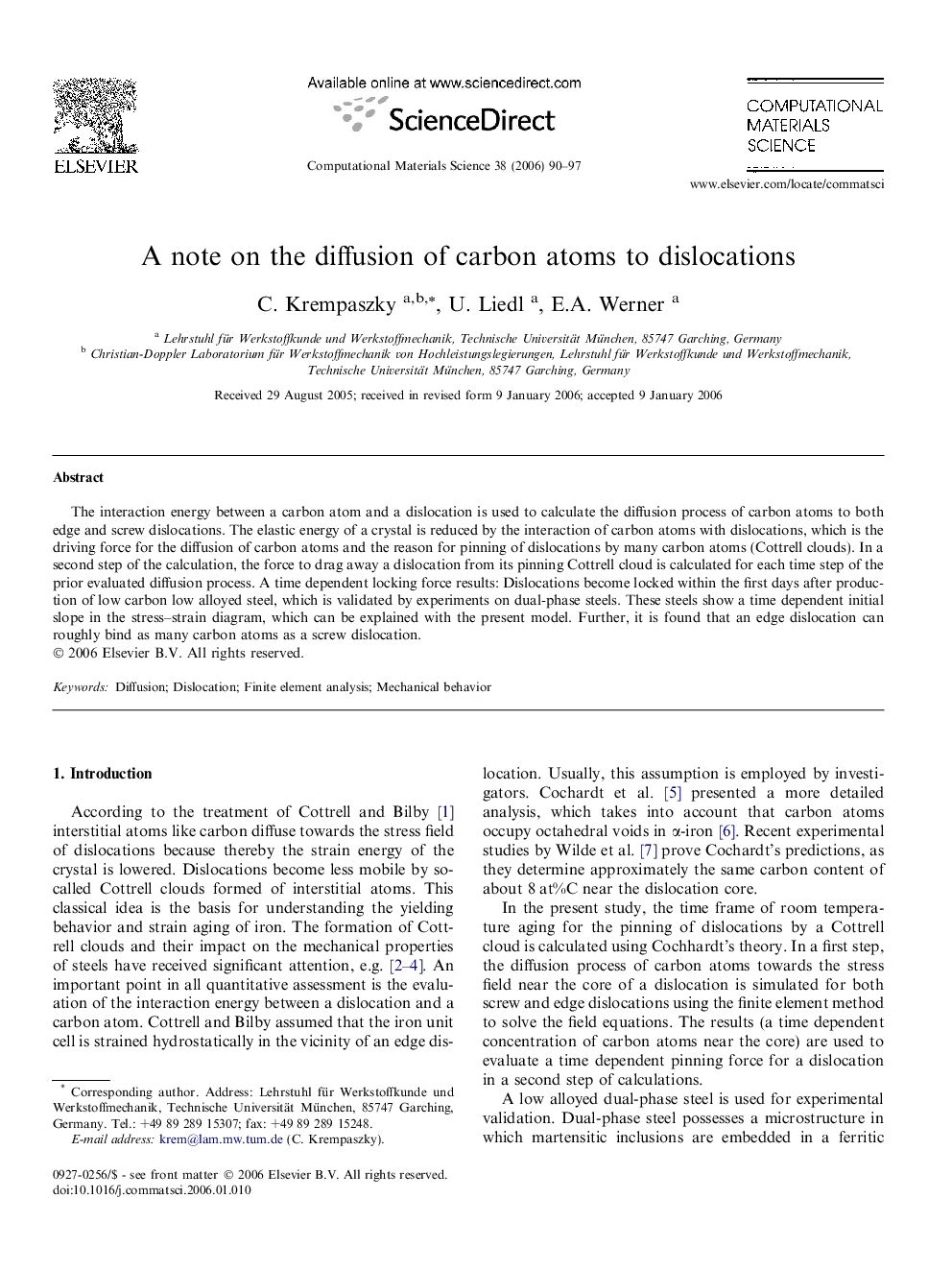| Article ID | Journal | Published Year | Pages | File Type |
|---|---|---|---|---|
| 1564465 | Computational Materials Science | 2006 | 8 Pages |
Abstract
The interaction energy between a carbon atom and a dislocation is used to calculate the diffusion process of carbon atoms to both edge and screw dislocations. The elastic energy of a crystal is reduced by the interaction of carbon atoms with dislocations, which is the driving force for the diffusion of carbon atoms and the reason for pinning of dislocations by many carbon atoms (Cottrell clouds). In a second step of the calculation, the force to drag away a dislocation from its pinning Cottrell cloud is calculated for each time step of the prior evaluated diffusion process. A time dependent locking force results: Dislocations become locked within the first days after production of low carbon low alloyed steel, which is validated by experiments on dual-phase steels. These steels show a time dependent initial slope in the stress-strain diagram, which can be explained with the present model. Further, it is found that an edge dislocation can roughly bind as many carbon atoms as a screw dislocation.
Related Topics
Physical Sciences and Engineering
Engineering
Computational Mechanics
Authors
C. Krempaszky, U. Liedl, E.A. Werner,
